‘Behemoth’ is a word which springs to mind or, perhaps more nautically, ‘leviathan’.
- Super-easy sail controls
- Large volume
- Modest rig
- Swing-out BBQ is great
- Huge cockpit
- Spacious below decks
Sailing is a breeze aboard Beneteau’s new Oceanis 51.1, thanks to some smart systems.
Once a yacht gets up around 50 feet, you might think that you’re going to need all hands-on-deck to get the thing sailing. But aboard the new-generation Beneteau Oceanis 51.1, the first of which has recently arrived here, it really is as simple as just pushing a few buttons.
At 15.9m overall and nearly 5m at max beam, the Oceanis 51.1 is not a small boat. But in its cruising configuration (a racier version is available, with a carbon spar and bigger sails), it’s easy to set up, and just as easy to sail, single-handed if required.
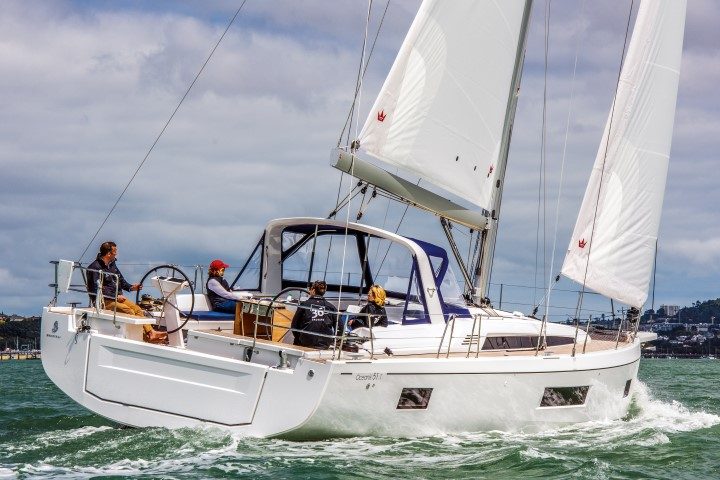
We took this brand-new boat, delivered for the Auckland On-Water Boat Show in September, for its maiden sail before it was handed over to its new owner, with the team from 36 Degrees Brokers. A fine spring day, more breeze than expected and a weekday-empty harbour (apart from a lot of container-ship action) made for an enjoyable interlude.
The secret of the Beneteau’s ease-of-handling is in the systems: an in-mast furling mainsail which, at 45m2 is on the small side for a boat of this length but adequate for comfortable cruising, and a self-tacking jib of around the same size, controlled by sheets which all run right aft, under coamings, making for an uncluttered deck.
The mainsheet is on a continuous German system, which brings the two ends of the sheet aft on either side, so the helmsman can control it from a large Harken two-speed electric winch right at the wheels. On the pedestals either side are easy-to-view B&G touch screens which display a chartplotter or instrument read-outs (and, importantly, can be used to control the stereo), with the controls for the autohelm to starboard.
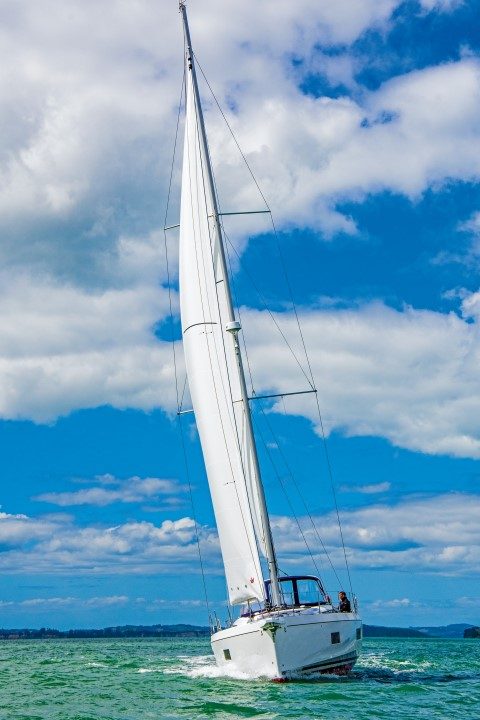
There’s a second pair of large winches here too, for the jib sheets, and the sail control clutches are right at hand as well, so everything can be handled from the rear of the cockpit. A nice touch here are the pair of rope tail bags, which have fold-down lids with squabs on top to make them an invisible extension of the cockpit seating.
Raising and lowering the main is as simple as pressing one of two buttons (slow and fast speed on the electric winch), using the sheet to unfurl it, as you do with the furling jib. The main can also be reefed this way if required, by furling part of it back into the mast.
Normally it would be a bit of a performance short-handed to get all the rag up, but the sails are hoisted in literally a minute; almost as soon as we are out of the marina, we are off sailing down the harbour, without anyone having to wield a winch handle, leave the cockpit, or even stand up. Dropping it is just as easy, with no flaking, stacking or lazy-jacks required.
Speaking of the cockpit, it’s massive. The hull shape doesn’t taper aft much from that 4.8m beam, and the twin wheels are set well back so there’s plenty of unimpeded entertaining space – enough for a central table with drop-leaf sides, for seating eight or more people. The boom is very high and extends only partway above the cockpit space, and the mainsheet blocks (there is no traveller) are positioned on the now-familiar Beneteau arch above the back of the cabintop, so there is nothing getting in the way of having a good time.
On this particular boat, the arch is fitted with a soft dodger with clear panels, to maintain visibility while providing shelter, and the owner plans a hard bimini to extend over the cockpit space. Up under the dodger are a pair of sunbeds which look like the perfect place to lie and read without getting fried by the midday sun.
Adding to the entertainment facilities is a gas barbecue built into the transom, which swings out over the boarding platform. This, too, is generous, and folds down at the push of a button, a large section of the transom opening up to create a large swimming and boarding platform.
 Side decks and wide and uncluttered, with the lines running aft in channels below deck level – there is little to stub your toe on here. The massive interior volume and high topsides means the cabin is sleek and low-profile at deck level.
Side decks and wide and uncluttered, with the lines running aft in channels below deck level – there is little to stub your toe on here. The massive interior volume and high topsides means the cabin is sleek and low-profile at deck level.
Hull shape, new for this iteration of the Oceanis range, is by French designers Jean Berret and Olivier Racoupeau, who started out with racing yachts before moving into large luxury yachts and production boats. The firm has worked with Beneteau for more than 30 years, and for this design has produced a beamy but modern-looking hull, with a pronounced chine forward and rounded aft sections. The boat we sailed has the standard T-shaped keel, but a performance keel can be specified if you’re going for the more racy version.
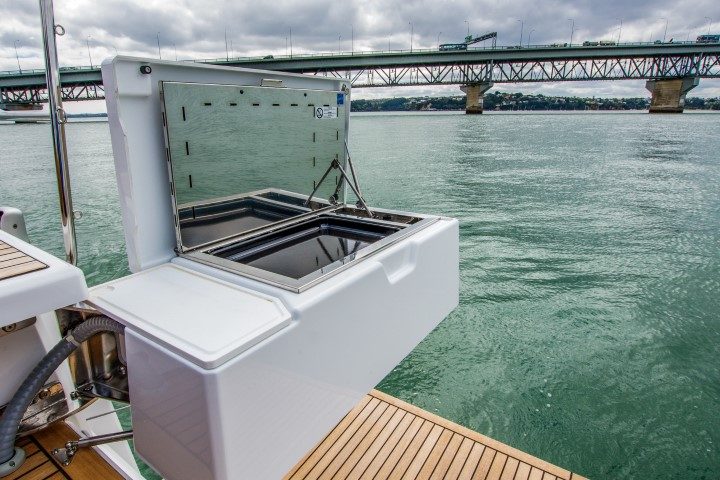
The new-look deck layout and interior are by luxury yacht designers Nauta. Another new feature of the seventh-generation Oceanis is its fully-infused deck and hull construction, to reduce weight and add strength, and it is powered by an 80hp new-generation, super-economical common-rail Yanmar diesel.
Interior
Below, the large volume generated by the beam and high topsides is revealed. There’s more than enough room to swing quite a large cat down here, with generous headroom and plenty of light coming in from hatches above and through-hull windows at seating level. The impression of space is accentuated by the large mirrors on the forward bulkhead.
To port, at the bottom of the wide, 45o companionway steps is the galley, with a built-in washing machine/dryer and pull-out icebox aft. There is also an integrated fridge and two in-bench freezer spaces as well, along with a two-burner gas stove and oven, large sink, and plenty of drawer and cupboard space. A fore-and-aft-facing settee runs down the galley’s inboard edge, and wraps around into the nav station forward. Opposite is the spacious U-shaped dining area.
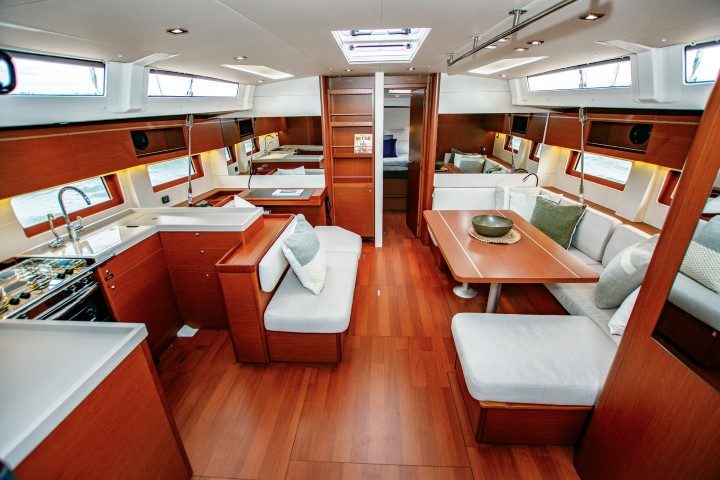
The aesthetic on this particular boat is suitably Kiwi-friendly, with rich mahogany cabinetry, laminated parquet-style floors and cream upholstery, but there are many other interior finishes available, including a paler, brushed oak timber.
Because of the hull shape and the position of the wheels so well aft, there is enough interior space for a double cabin each side aft, running under the cockpit. The cabin to starboard has a semi en suite head and shower, which is also accessible from the saloon.
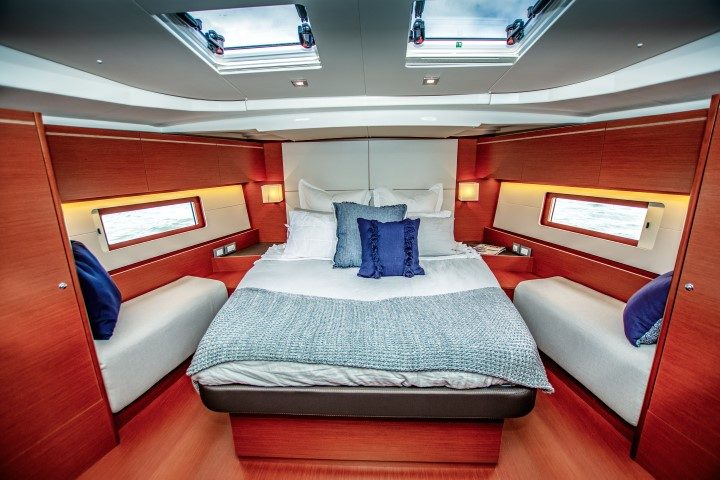
Up in the bow is the master cabin, with a walk-around fore-and-aft double berth, a settee each side, and separate en suite head and shower rooms.
And there is one more cabin: a ‘crew berth’ right up in the bow and accessed through a deck hatch, large enough for a single berth and head.
Performance
As mentioned, taking the Oceanis 51.1 for a sail is, quite literally, a breeze. With its conservative sail area this cruising model is built more for comfort than speed, but is light and easy to steer, the helm remaining responsive and unloaded even in the puffs of cool spring breeze we encounter when heading back up the harbour. We’re never feel overpowered or excessively heeled.
The biggest bonus, however, is the ease of sail control, with the main and jib sheets immediately at hand, and the large, powerful electric winches doing all the donkey work. The self-tacking jib and sheeted-each-side main means that the helmsman only has to tell the crew they’re tacking as a courtesy – no one has to do anything.
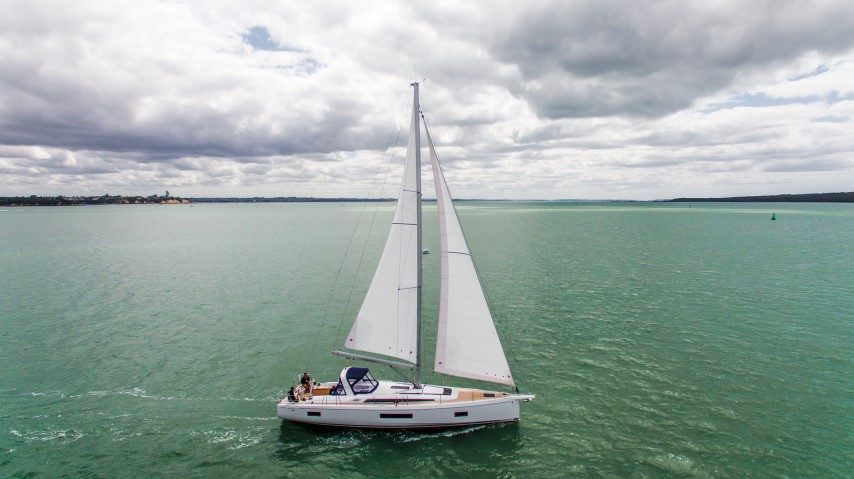
A larger, overlapping genoa and/or code zero can be added to the wardrobe for extra performance, as well as a 150m2 gennaker for those who feel the need. A racing-style mast option adds 1.5m of elevation and an extra 12m2 to the main.
Beneteau’s track record in producing popular production yachts is reflected by its substantial global market share. Much thought has gone into making the new generation Oceanis 51.1 an easy-to-handle, super comfortable cruising boat with masses of space, and clever systems and storage features.
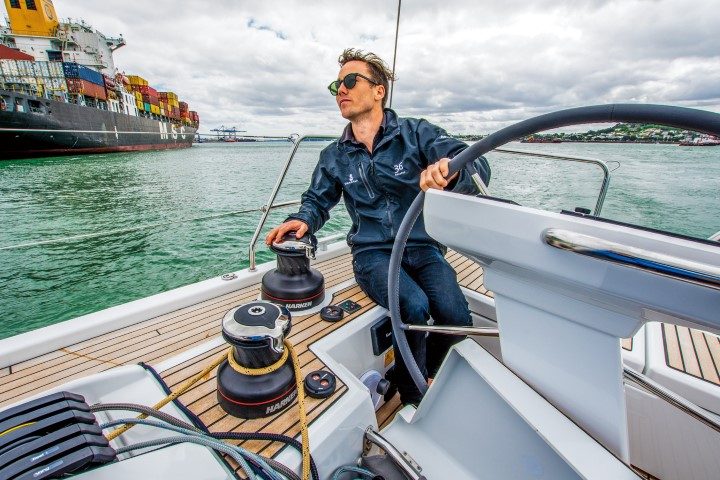
Performance features, such as a carbon rig, larger sails and a racier keel, can be specified for those who want more of a cruiser-racer, but for those who just want to get out sailing in comfort with a minimum of fuss, this boat ticks all the boxes.
‘Behemoth’ is a word which springs to mind or, perhaps more nautically, ‘leviathan’.
White Pointer has earned the respect of discerning customers in New Zealand and Australia, attracting a loyal and ever growing following for its high-quality, rugged and totally dependable aluminium trailer boats.
The hardtop SP635 shares the same underpinnings as the popular SF 635 which was a completely new model back in 2020.
The pride and joy of a multi-generational family, Bliss resides on a pier that’s home to a couple of other Elite motor launches – Sandspit Marina is a hot-spot for the Bill Upfold-designed vessels, with several calling this small marina home.